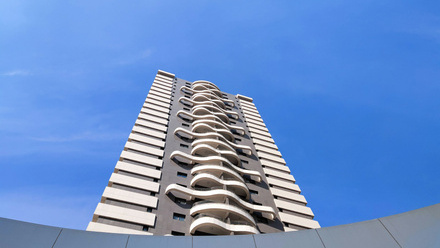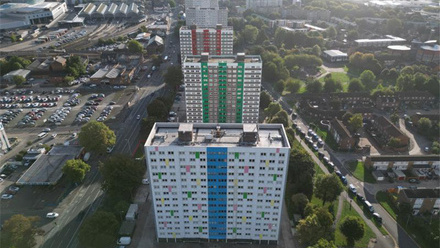Building Safety Act 2022 | Receives Royal Assent | Commentary by CIAT
The Building Safety Act, which is a culmination of the activities that have taken place since the Grenfell disaster in 2017, received Royal Assent on 28 April 2022. CIAT has been working with Government, CIC and other bodies on various aspects of the Act to contribute to making necessary changes. It is critical that Industry works together to raise competence across the board and instil integrity and responsibility across teams working together to construct, develop and maintain structures.
Many of the proposals are excellent and once the secondary legislation is drafted, we will be able to comment in more detail on the implementation in a proportionate and balanced way.
Additional information can be found in these fact sheets.
The Government has also published a rough transition plan of the main regime.
Golden Thread
The Act is far reaching and lays the foundation for the new building safety regime. The Golden Thread enables building users to understand the building and keep it safe. It includes the need for accountability, and the currency, maintenance and retention of records. This is a positive outcome and one where we know much work is currently being undertaken on its workability.
HSE as Regulator
We support the Health and Safety Executive as the Regulator to ensure that there is a clear, joined up approach across all health, safety and welfare issues and that the Act will sit alongside the CDM Regulations rather than in conflict with them.
Product Testing
We were also pleased to see the Government sponsored review on product testing and certification; the results of which should frame the secondary legislation on this subject.
Construction Products Regulations
We are particularly supportive of the cohesive approach to standardise information in relation to construction products. We are in the process of liaising with providers to encourage more transparency and are pleased to be working with the Department for Levelling Up, Housing and Communities on the draft Regulations. We are supportive of the work that the Construction Product Association (CPA) has commenced with the Voluntary Code and the Construction Leadership Council (CLC) in attempting to address various issues in respect of Goods and Materials. We welcome clarity for manufacturers, designers and installers as to the products they are specifying and using to construct buildings.
Having clear requirements as to the information to be provided will assist both manufacturers and specifiers in ensuring that the technical performance of buildings is achieved.
Should product substitution be necessary, it should be easier to discern like for like, not only in terms of compliance with standards, but also the performance and availability of such products, in addition to ensuring sustainability.
Principal Designer
Chartered Architectural Technologists are well equipped to navigate the changes and take on the duty holders’ role of Principal Designer under the Building Safety Act. Chartered Architectural Technologists operate within design already, and work within the current regulatory framework to ensure compliance and performance for building safety of occupants and users.
As the detail of the new regime continues to develop and there is clarity of secondary legislation, CIAT will regularly assess and amend procedures and practice as and if necessary, and avail and facilitate the tools to support its members and affiliates. The Institute is well prepared and has the mechanisms in place to prepare for the new regime and is working closely with government and others to ensure that this is implemented positively as a proactive lead in these activities
Amendments to Defective Premises Act and Limitation Act
The Institute has expressed its ongoing concerns in relation to the amendments to the Defective Premises Act (DPA) and Limitation Act, as included within the Building Safety Act. By seeking to extend the period within which legal action can be brought from six to thirty years on a retrospective basis, it will likely create new exposures on long completed projects overnight. This will include, possibly unintentionally, claims unrelated to fire safety aspects.
Whilst CIAT agrees that culpability should be accepted by and apportioned to those responsible, there is potential that innocent parties will be targeted. Defending such claims is likely to be problematic where records older than six years may have been destroyed in line with GDPR obligations and/or relevant employees long left the businesses. Some businesses will have ceased to trade and may be uninsured for such claims.
The proposed changes to the DPA also broaden the risks which insurers will be asked to cover and may force them to take commercial decisions on their appetite to cover claims under the DPA and Section 38 of the Building Act 1984. This in turn may result in further policy exclusions or cover written on a more restrictive basis and higher premiums. This may also result in those professionals or former professionals faced with claims under the DPA having to pay those claims themselves, possibly without the means or documentation to do so. In some instances, this could result in insolvencies.
Commenting on the Enactment of the Building Safety Bill, Kevin Crawford PCIAT, said “CIAT wholeheartedly supports the principles behind the Building Safety Act and what it is trying to achieve; and as such is a key player in the response to the Hackitt Review and the changes necessary to protect life. This legislation will have an impact on every sector of the construction industry for many years to come.
"We do however, consider that there are areas of the Act that will result in unintended consequences, that will need to be addressed going forward. We have made and will continue to make representation to Government in these areas.”





